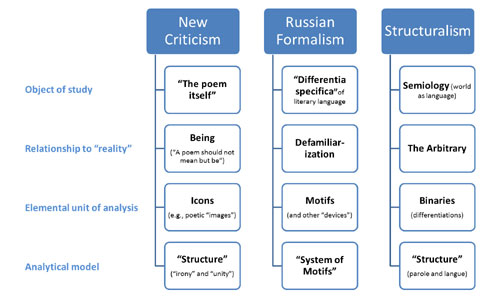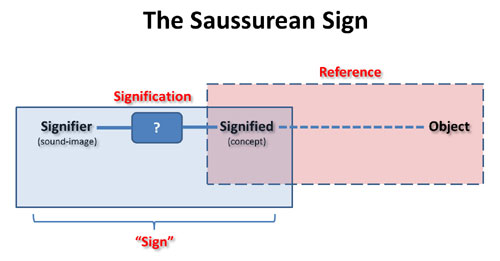-
If you are citizen of an European Union member nation, you may not use this service unless you are at least 16 years old.
-
You already know Dokkio is an AI-powered assistant to organize & manage your digital files & messages. Very soon, Dokkio will support Outlook as well as One Drive. Check it out today!
| |
Class 9 Notes
Page history
last edited
by Alan Liu 10 years, 2 months ago
Preliminary Class Business
From End of Our Last Class on Russian Formalism:
- Shklovsky quoted in Eichenbaum's "Theory of the Formal Method" (p. 112): "We do not experience the commonplace, we do not see it; rather, we recognize it. We do not see the walls of our room; and it is very difficult for us to see errors in proofreading, especially if the material is written in a language we know well, because we cannot force ourselves to see, to read, and not to 'recognize' the familiar word. If we have to define specifically 'poetic' perception and artistic perception in general, then we suggest this definition: 'Artistic' perception is that perception in which we experience form--perhaps not form alone. but certainly form."
- Boris Tomashevsky, from "Thematics" (1925) (p. 78): "The system of motifs comprising the theme of a given work must show some kind of artistic unity. If the individual motifs, or a complex of motifs, are not sufficiently suited to the work, if the reader feels that the relationship between certain complexes of motifs and the work itself is obscure, then that complex is said to be superfluous. If all parts of the work are badly suited to one another, the work is incoherent. That is why the introduction of each separate motif or complex of motifs must be motivated. The network of devices justifying the introduction of individual motifs or of groups of motifs is called motivation."
- Vladimir Propp, Morphology of the Folktale (1928), pp. 92-93
- Sergei Eisenstein, Film Form: Essays in Film Theory, ed. and trans. Jay Leyda (New York: Harcourt Brace Jovanovich, 1949)
Structuralism
Readings from Structuralism:
Principles of Structuralism

1. Semiology
2. The Arbitrary

3. The Binary
4. Structure
(Differentiation + Homology)
Class 9 Notes
|
|
Tip: To turn text into a link, highlight the text, then click on a page or file from the list above.
|
|
|
|
|
Comments (0)
You don't have permission to comment on this page.